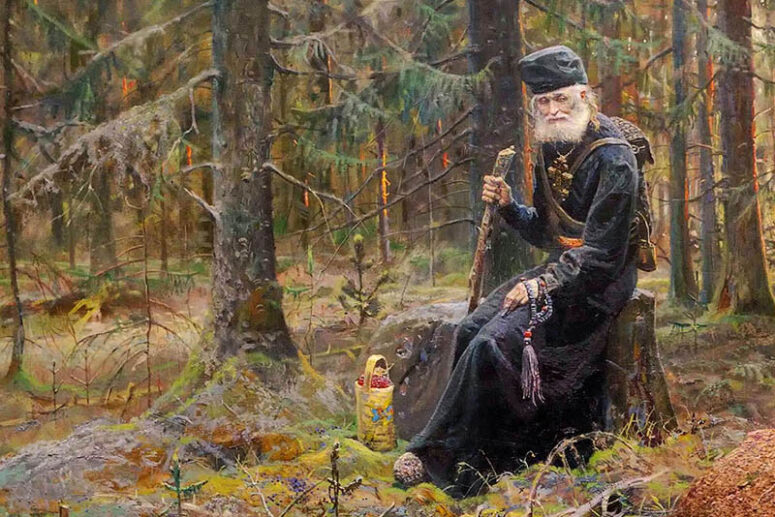
The word “saint” is usually associated with an image of an elder, proficient in fasting and prayer. At the same time, today it is hardly possible to imagine a saint who would eat grass next to wild animals or live for years, allowing iron chains to cut his body to the bones. Yet, such examples of saints do exist. In this article, we will try to expand our understanding of holiness and ascetic deeds, in an attempt to understand the saints who have chosen unusual ascetic practices. Let us try to reveal the deep meaning of these practices and answer whether such phenomena are possible today.
About Asceticism
Our Lord Jesus Christ Himself is considered the founder of New Testament asceticism. In the Gospel, He repeatedly stresses the need for self-perfection and putting forth efforts to achieve the kingdom of God: “Be ye therefore perfect, even as your heavenly Father is perfect” (Matthew 5:48); “the kingdom of heaven suffereth violence, and the violent take it by force.” (Matthew 11:12)
Having adopted ancient terminology, Christianity has taken the concept of asceticism beyond that of an “exercise”, enriching it with new spiritual meanings. Every Christian, whether a monk or a layman, is called to become an ascetic, a spiritual athlete who practises virtue daily, courageously resisting all obstacles on the path of fighting passions and striving for spiritual perfection. Its goal is the salvation of the soul, achieved through active acquisition and multiplication of love for God and neighbor (Matthew 22:37, 39). However, fulfilling these basic commandments (Matthew 22:40) implies deliverance from passions. After all, a person serving his passions closes his heart to love for people and God, because “…you cannot serve God and mammon”. (Matthew 6:24)
According to the holy fathers, passions arise from a person’s natural needs and movements of the soul, which, due to connivance, acquire a perverse character. So the need for food can be transformed into gluttony, and reasonable thrift can turn into greed. This state of affairs requires a Christian to treat himself responsibly, to be moderate and conservative in satisfying his personal needs, and attentive to the emotional side of his life. Our main weapon in the struggle against passions is repentance, which consists in changing our way of thinking and acting, whereas the main power of salvation is the grace of God, which promotes the good will of the soul.
However, not everyone sees an opportunity for him- or herself to fulfil the ideals of the Christian life while living in the world. The criteria for a monastic way of life are laid down in the words of Christ about perfection that can be achieved through fasting (see Matt. 6:17-18), chastity (see Matt. 19:12), and poverty (see Matt. 19:21). While it is true that monasticism greatly expands the field of prayer, fasting, and other Christian practices, the Lord’s commandment appears to be immensely broad (Psalm 118:96), and the scope of such practices sometimes reaches limits that the average person cannot comprehend. This can be explained by several reasons.
Love for God endows ascetics with a variety of ways of likening themselves to Christ and his kenosis. They include voluntary humiliation, enduring suffering, abuse and ridicule, and prayer for the whole world on the way to theosis and deliverance from passions.
The deeper a passion is rooted in a person, the greater the effort is needed to overcome it. While one person may triumph over his passions by fasting, prayer and an effort of will, another will need to “cut off the tempting hand,” that is, to exclude the very possibility of committing sin, as was the case, for example, with St. Mary of Egypt.
Many ascetics, who were already experienced monks, took on rigorous ascetic exploits, seeking a way to express their ardent love for God and neighbor through fervent prayer, drawing closer to the Creator and renouncing anything that could be an obstacle to it. For example, St. Simeon of Emesa, after decades of monastic life in the desert, decided to return to the world, accepting the ascetic exploit of foolishness for Christ, not only to save his own soul, but also to serve the salvation of others.
Asceticism is the ladder of godliness and the answer to God’s call to “take up your cross”. It provides varying degrees of renunciation of the world and the self, limiting the flesh, sometimes in the most severe way. In man there is always a struggle between the two natures, where the body must suffer in order for the soul to remain sound. The apostle writes, “…what the flesh desires is opposed to the Spirit, and what the Spirit desires is opposed to the flesh, for these are opposed to each other, to prevent you from doing what you want.” (Gal. 5:17) In a similar way, St. Gregory the Theologian wrote about “two minds”, spiritual and carnal, where one is subject to God, and the other to the flesh; one aspires for the heavenly and the sacred, while the other delights in revelry, merriment, and transient things. In a word, one mind leads to the kingdom of God, while the other is bound into darkness.
This is why many ascetics, in order to become bearers of the Kingdom of God, obedient to the mind of the spirit, did not spare their flesh and resorted to the most unconventional ways of taming it. This gave rise to such “extreme” types of asceticism as anchoritism, stylitism, foolishness for Christ, and others. For such sacrifices, the Lord strengthened and rewarded His righteous with grace-filled gifts.
However, these devotions are most often callings from God, not “intended” for most Christians. The Lord does not demand from a person anything beyond his measure. At the same time, He gives each person the amount of grace that he or she is capable of embracing.
Stylitism and Other Movement Restrictions

While the first known pillar ascetic is St. Simeon, who lived in the fifth century, St. Ephraim the Syrian mentions seeing a certain man who retreated on a pillar a century earlier.
Stylitism is an ascetic practice of praying, preaching and fasting continuously while remaining on a pillar, or any towering object, such as a boulder, a rock, a tower, a column, etc. Certain stylites spent years, or even decades on pillars. For example, St Simeon has lived on a pillar for 37 years.
Such pillar dwellers were not protected in any way from the weather. Enduring wind, snow and rain, they did not leave their dwellings even during illnesses. St. Daniel the Stylite, one of the first followers of St. Simeon, once almost froze to death. He lost consciousness in the freezing rain, and when they found him, his face was covered with a crust of ice.
The stylites spent all their time in fasting and prayer. They rarely communicated with their visitors, only taking a minimum of food from them. Some, following the example of St. Simeon, tied themselves to the pillar so as not to be able to leave it, even if they wanted to. Over time, the fetters dug into their flesh, making their ascetic exploits even more difficult. According to the life of St. Simeon, his fetters eventually exposed his bones and sinews.
For voluntarily enduring such suffering, the Lord blessed stylites with miraculous powers and clairvoyance. For example, the emperors Theodosius II and Marcianus consulted St. Simeon, who also healed people and predicted the future. The holy stylites Daniel, Nicetas and Seraphim of Sarov also possessed miraculous powers. In the twentieth century, St. Seraphim Vyritsky practised stylitism during the Great Patriotic War.
There are other ascetic practices associated with limiting one’s freedom of movement for the sake of unceasing prayer. The same St. Simeon, before retreating onto the pillar, had spent some time in a waterless well.
Blessed Theodoret of Cyrus writes in his book titled History of Theophiles about the ascetic Baradates who after becoming an anchorite made for himself a tiny wooden hut on a cliff, which was too small for him to stand upright. The gaps between the wooden boards made this dwelling similar to a cage, in which the Saint suffered from rain and other weather conditions. He made himself a leather tunic, completely covering his body and exposing only his mouth and nose. Standing with his hands raised to the sky, Venerable Baradates constantly prayed to God.
St. Theodoret also writes about other ascetics adhering to similar practices. For example, Venerable Thalilaeus Epiklautos arranged for himself a cramped hut, in which he could only fit in a bent position, with his head on his knees.
Blessed Anastasia of the 20th century spent sixty years praying in a seated position. You can read about her feat of faith at the following link.
For the Memory of Death. Sleeping in a Coffin
Saint Theodoret also mentions certain God-lovers who slept in coffins for the sake of the remembrance of death. The ascetic Simeon “the Ancient”, having buried his companion, dug a second one next to his grave. He slept in that grave and did not go far from it, waiting for his own death. Another ascetic, Peter chose a tomb for himself and lived there in seclusion.
A similar practice is somewhat common among modern monastics as well. In the book of our contemporary, Metropolitan Tikhon (Shevkunov) titled Everyday Saints we read about monk Alexander, who also slept in a coffin.
“Grazing“ Hermits
The ancient patericons, as well as The Spiritual Meadow by St. John Moschus, and The Ecclesiastical History by Evagrius Scholasticus mention a special type of hermits. Literally translated from Greek, these monks are called “grazers “. Grazing hermits went into the wilderness where they lived like “birds of the air” (Matt. 6:26). Completely abandoning clothes and cultivation of the land, they ate grass together with animals.
According to Evagrius, over time “grazers” lost both the outward human appearance and the human way of thinking. Usually, when people saw them, they ran away. Pursuing such a hermit was difficult: they ran very fast and skilfully hid in caves and crevices.
Some of them, according to Evagrius, returned to human society, becoming holy fools and trampling on worldly glory. These ascetics achieved a degree of dispassionateness where they no longer made any distinction between the noble and the poor, the decent and the obscene, women and men. Summarising the description of their way of life, Evagrius writes, “By a life thus all excellent and divine, virtue exercises a sovereignty in opposition to nature, establishing her own laws”.
Wandering and Barefoot Pilgrims
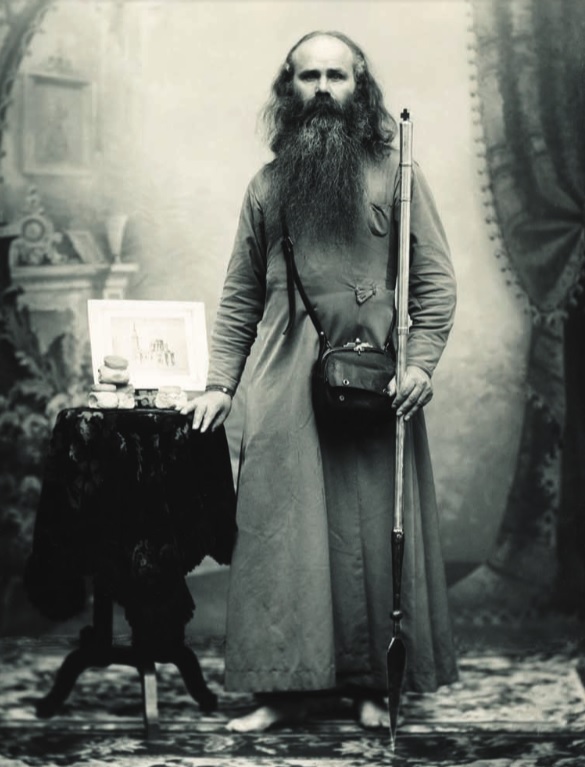
Wandering is an exclusively East Slavic type of asceticism. Wanderers never stayed anywhere for long and constantly moved from place to place, travelling across the Russian Empire and making pilgrimages to holy places in other countries, such as the Holy Land. St. Matrona the Barefooted was one of the many wanderers always travelling barefoot, even in winter time. According to her own testimony, she was in the Holy Land four times and made dozens of pilgrimages to the Solovetsky Islands, Valaam, the Trinity-Sergius Lavra, the Sarov Hermitage and other holy places. You can read more about Matrona the Barefooted here .

The wanderers gave up their possessions and were satisfied with only the bare necessities: clothing, a walking stick and Holy Scripture. Supporting themselves mainly with alms, they prayed, and sang spiritual songs and chants. Some wanderers were known to be clairvoyant seers and predicted the future. For example, the holy fool Mitya Kozelsky was revered as such even by the emperor and his family.
Russian ethnographer S.V. Maximov, who studied wanderers, wrote that many of them made their living largely by delivering prayer notes to famous places of pilgrimage. In the first half of the twentieth century, wanderers have virtually disappeared.
Self-torment
One of the most common methods of mortifying the flesh was the wearing of chains, rings, headgear, soles, shoes, etc. When worn for a long time, these fetters exposed flesh, leaving open wounds.
Some of them were so heavy that their bearers could hardly move. Blessed Theodoret writes about the ascetics Marana and Cyra, whom he knew personally, that they wore fetters for forty-two years. Marana could hardly walk and interact with visitors, while Cyra could barely stand.
The already mentioned St. Thalilaeus, who built an extremely uncomfortable dwelling for himself, was convinced of being destined for eternal torment. So, he subjected his body to moderate punishments in order to reduce the severity of the future torments.
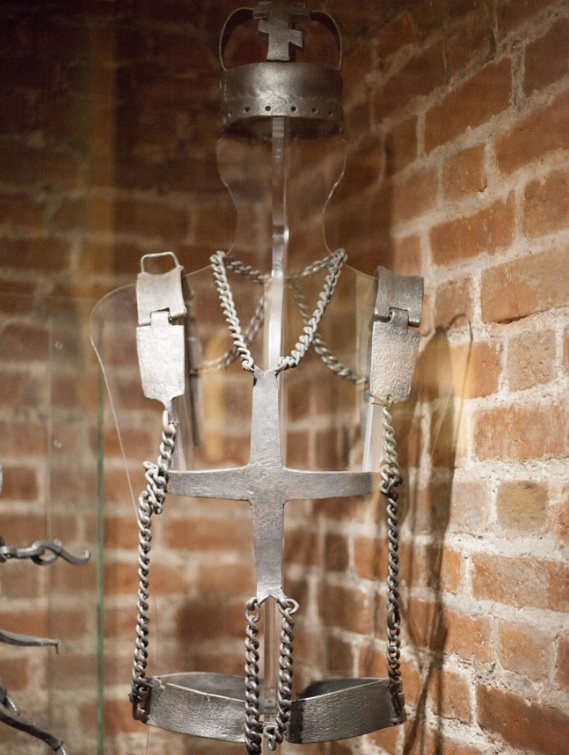
Venerable Simeon the Stylite once had a vision from the devil, towards whom he took an unconscious step. After that, the leg of the ascetic became inflamed and rotted. Worms began to breed in it. Eventually, there were so many of them that they literally began to flow down the pillar. The visitors who wanted to approach the saint closely had to smear cedar oil under their noses to endure the stench. Simeon then instructed a certain young man to collect the worms flowing from the pillar and apply them back onto the wound with the words: “eat what God has sent you” .
What is the meaning of such a path of self-sacrifice and patience? The main thing is the purpose for which the action is performed. On the one hand, the human body is the Temple of God and deserves proper treatment. On the other hand, if hurting the body helps to heal the soul and strengthen the spirit, then this is regarded as righteousness. This is confirmed by numerous miracles performed by St. Simeon and other righteous, not sparing their own flesh and accepting severe, prolonged illnesses as a blessing.
Not for Everybody
All the feats of faith and ascetic practices discussed here are a lot of the few. One thing that they all have in common is that from a worldly point of view they are absurd, incomprehensible, and sometimes even cause antipathy. Yet, the wanderers, the stylites, and other ascetics mentioned here, understood the finiteness, fragility and conditionality of worldly life, as well as the absolute value of life eternal. Driven by their firm faith, they were not afraid to commit acts that contradicted the logic of the world. If “the wisdom of this world is foolishness with God” (1 Cor. 3:19), then perhaps God’s wisdom is foolishness with the world.
Today, when life has changed radically, and comfort has become the norm, rather than a privilege, it has become harder to give up the world. Christian asceticism has become a disappearing phenomenon, let alone its “extreme” forms. There are no more stylites, “grazers” or wanderers. Just as the presence of such phenomena in society reflected the level of its spirituality, their current absence is a sign of a growing catastrophe. “Do you not know that friendship with the world is enmity with God?” (James 4:4).
Separate islands of holiness, such as Mount Athos, Optina Hermitage, Valaam Island and other monasteries, still shine for us. However, globalisation is persistently driving the whole world towards the weakening of Christianity. Therefore, in order to preserve the right and the very possibility of being a Christian, every effort must be made to preserve the Church’s existing heritage – the meaning and content of Christianity. We are fully able to be faithful in little things and carry the seed of faith further. The lives of the saints make it clear that the cross of our Christian duties is bearable and light. Keeping oneself from excesses and harmful influences, regular prayerful communication with God, life in close connection with the Church, a merciful attitude towards others – all this is incomparable with the exploits described above, but this is the minimum that makes us Christians.
Faithfulness in small things will help us modern Christians to fulfil our main task of preserving the true faith. If we cope with this, the Lord will not leave us without worthy examples of holiness and spiritual guidance. There will always be, albeit few, sincere seekers of God, willing to sacrifice everything for the sake of His Love and imitating, at least remotely, the works of the ancient saints.

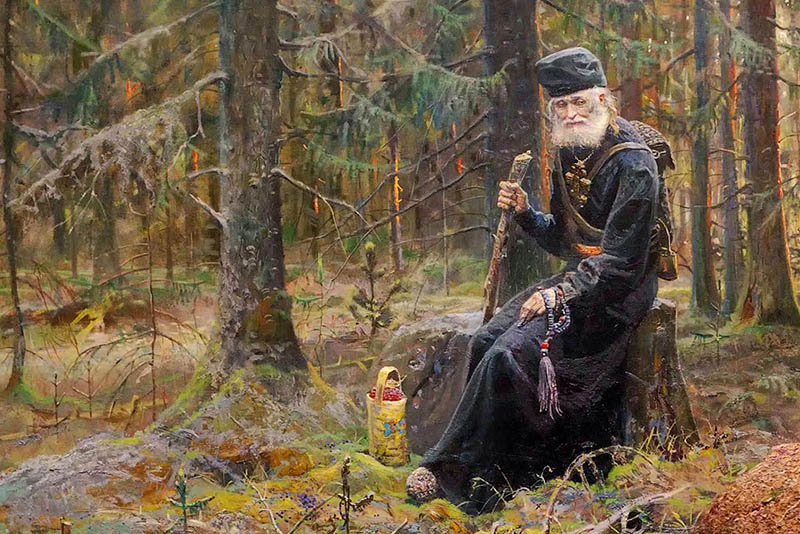
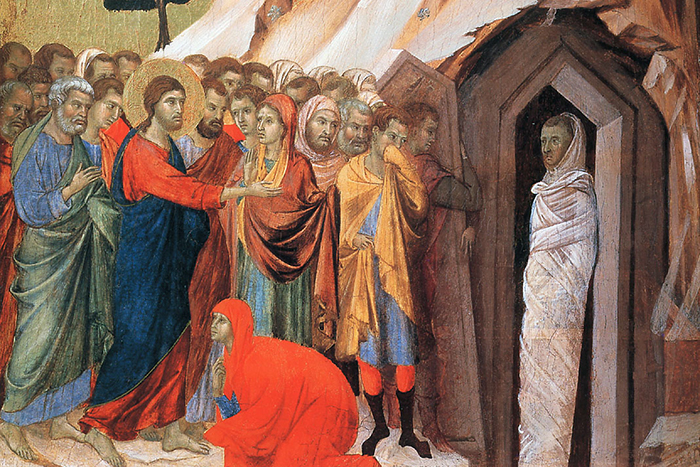
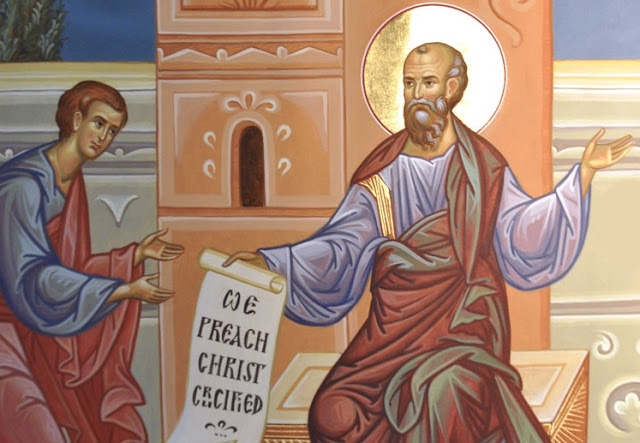

A good article. Many thanks
As a cradle Orthodox, confusion in Byzantine Catholic remains with me. The same Saints fall into both faiths.